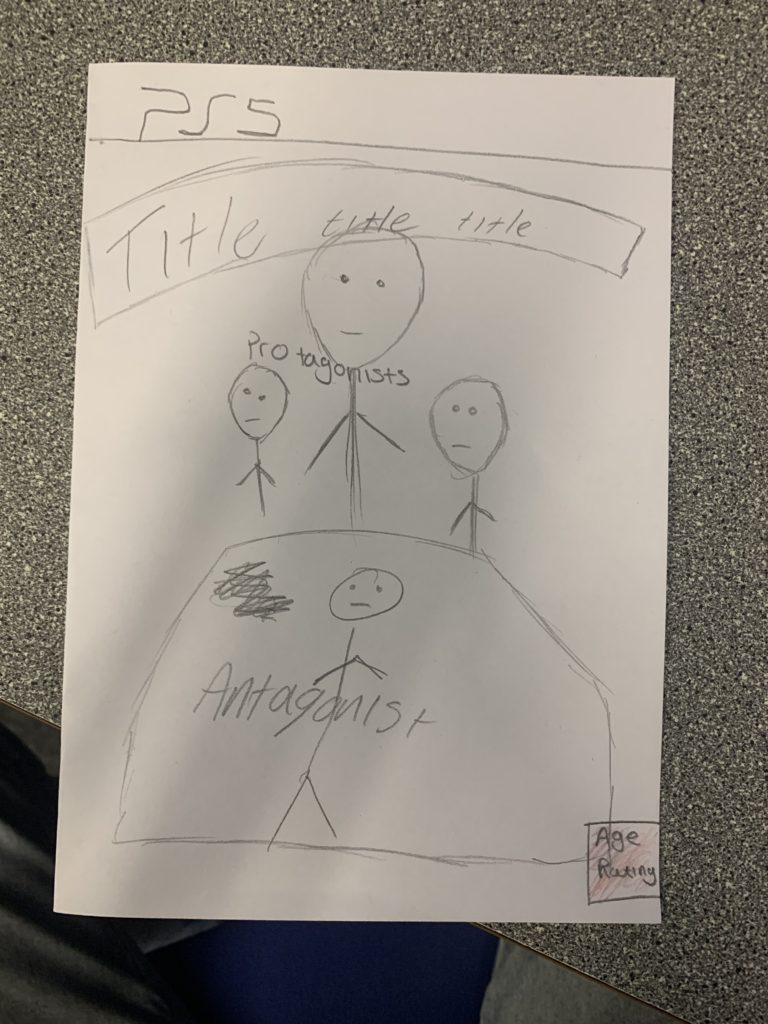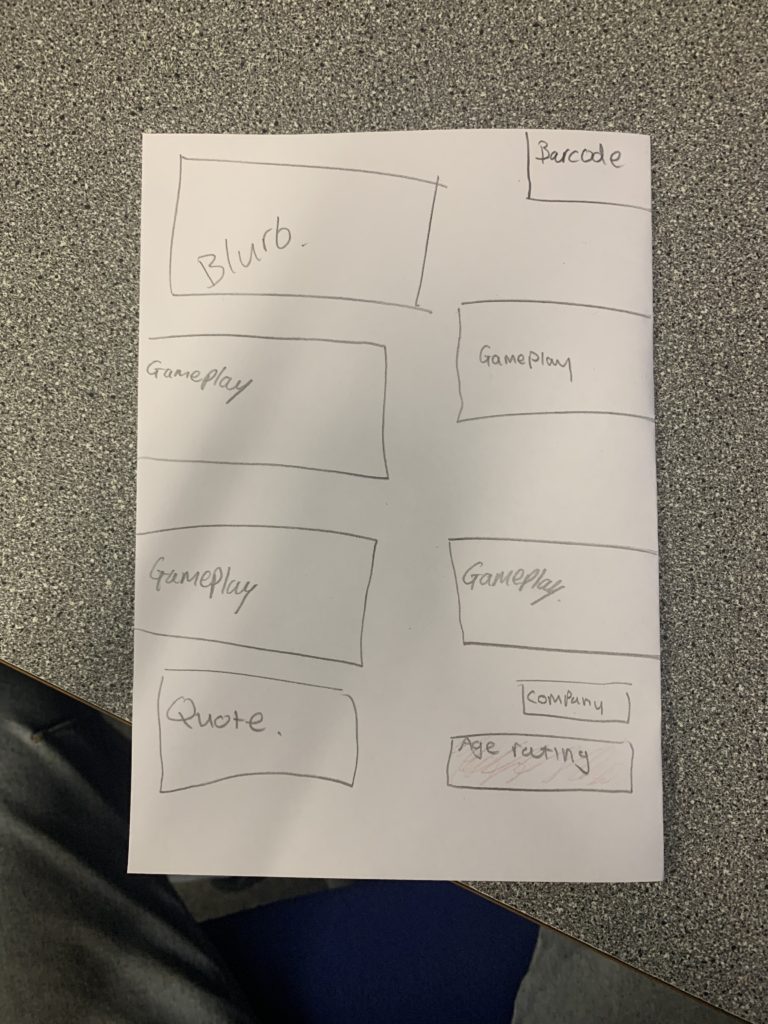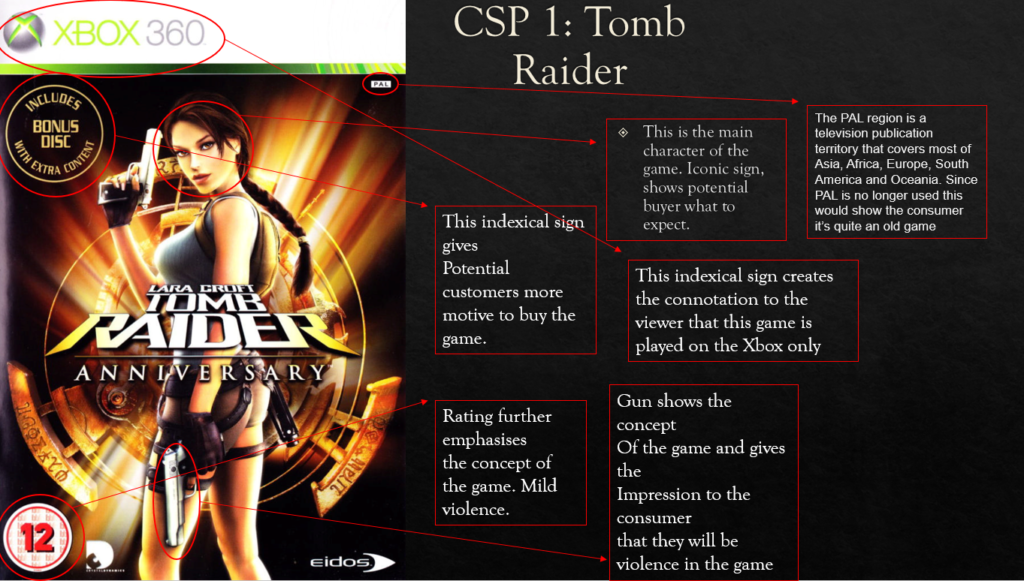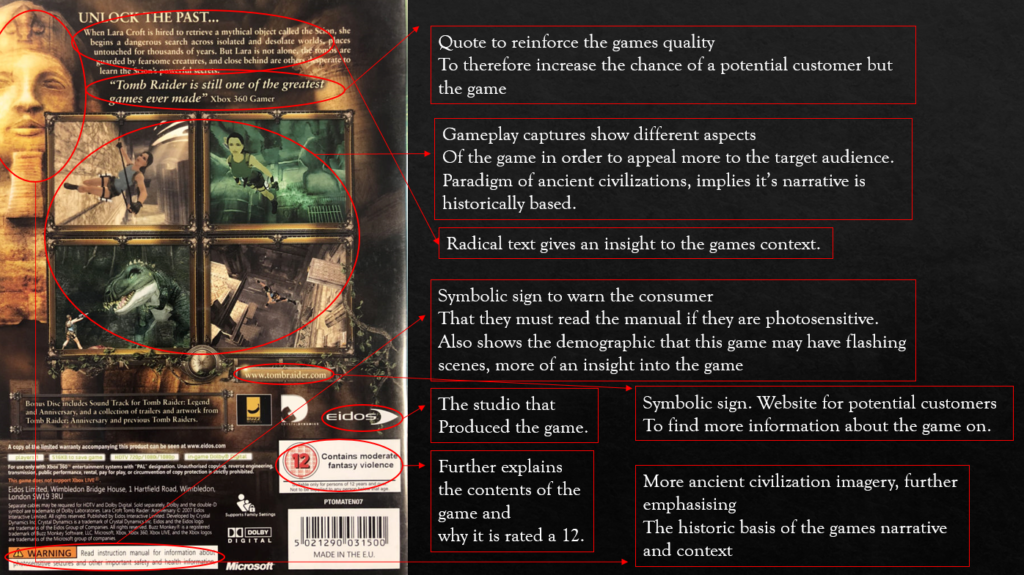In this essay I am going to analyse and evaluate the relationship between the two CSP game covers(Tomb Raider and Metroid). To do this I’m going to apply my knowledge and understanding of semiotics to aid my arguments and counterpoints.
I will be arguing the point that the over-sexualisation of women which can be seen to be directed to Lara Croft, the main protagonist in Tomb Raider, is exploited by game companies to appeal to their target demographic of straight males. Furthermore I will further explore this idea of the male gaze by using other examples from articles and feminist influences and point of views. I will go onto the game ‘Metroid’ and elaborate on the radical approach the game creators took with the narrative, this approach being the fact that the game left it open whether or not the main protagonist was female or male. The game did this by not revealing who was under the armour, that armour being seen as something that would be worn as a male, but that would be expected from the stereotypical and reactionary gaming demographic. For each of the CSP’s I will display a counterpoint to each of my original arguments.
On the Tomb Raider front cover the dominant signifier is clearly represented as the main protagonist Lara Croft, this means she is going to act as the focal point to the consumer. So of course, to appeal to the large majority of the gaming demographic, the game companies oversexualised Lara Croft, this can be seen with the posture used which emphasises her body. This iconic sign on the denotation of the cover creates a code, to the most likely straight male consumer, a code which implies to that consumer what the game is about. It could be said that the game companies, at least in some instances, rely on the male gaze








